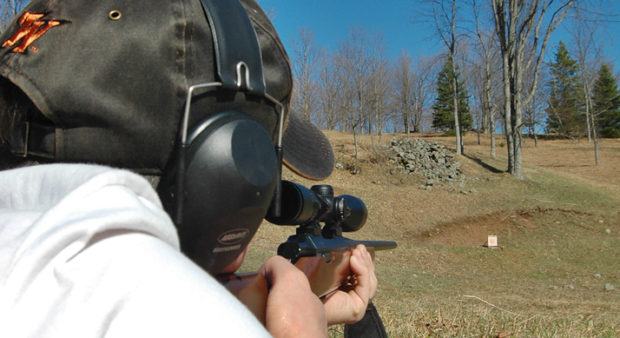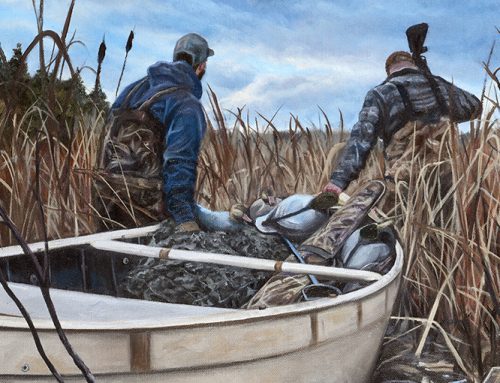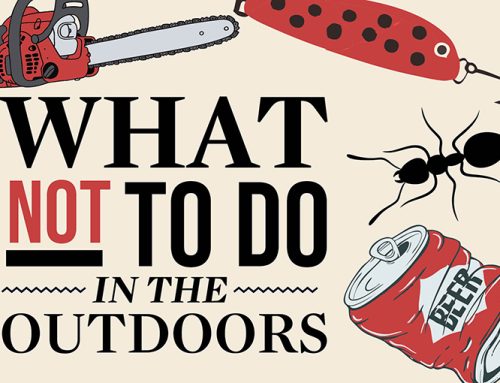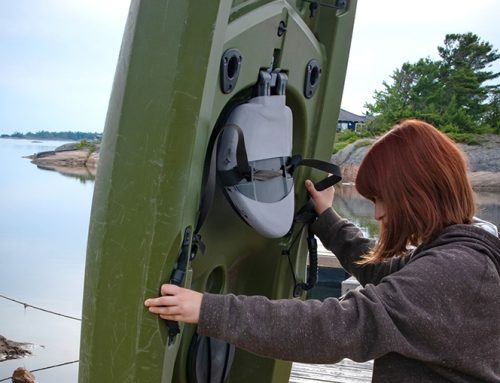Have you ever wondered why you can have your crosshairs perfectly on the target, and fire the smoothest, sweetest shot ever and still get shots to the left or right of your aiming mark? If so, this may be the secret you’ve been looking for: how to make point of aim (POA) your point of impact (POI).
Even with a properly zeroed sight, your POA may not be your POI, unless you apply the technique of natural body alignment and some advice on how to do it in the field when your game can come from several directions.
When you touch the rifle, you are applying some sort of force on it. With the excitement of a big-game animal in our sights, you can grip that rifle pretty tightly. Here’s the thing. When the rifle fires, the recoil actually lifts the rifle, making it weigh less for a moment. So any force you’re putting on the rifle can make it move at the most critical time.
You don’t see it because it’s all covered up in recoil, but while the bullet is travelling down the barrel, you’ve actually pushed the rifle off your POI.
The trick is to have a neutral hold on the rifle, with no lateral force, while you’re on target. This is what we call natural body alignment.
To try this out, you don’t need ammo. You can practice this dry. All you need is your favourite rifle and a POA or target.
- Step 1 – Assume a shooting position and point yourself in the general direction of your target.
- Step 2 – Close your eyes and relax. Keeping your eyes closed and give your muscles a few moments to uncoil.
- Step 3 – Open your eyes and see if you are still pointing at the target. If you aren’t, don’t just muscle the rifle, but move (rotate) your position from the ground up. Then check again.
Once you’ve sensitized yourself during training, you’re ready for the field.
When you’re walking or standing, it’s not too hard. You’ve got a pretty big area of swing just by swivelling your shoulders from the waist or by stepping to one side or the other. That keeps the rifle butt squarely on your shoulder and your hands gripping the rifle with even sideways pressure.
When you’re sitting in a stand, it can take a little more planning. Here you have an area of swing to consider. An area of swing is the area you can cover by rotating at the waist (without having to move on your seat).
Many hunters put their back to a tree and face their hunting ground straight on to the middle of the open area. This gives them a good area of view, but not necessarily the area of swing that they need to deliver the best rifle shot.
When you’re seated, you will notice that a right-handed shooter can swing the rifle from in front to the left for about 80 degrees, while keeping a good shooting position with the rifle butt firmly in the shoulder. However, if you try to cover the ground to your right, you quickly run out of swing room.
For the left-handed shooter, it’s the opposite.
At the end of your swing room, you need to move your body around to improve your shooting position and keep your natural body alignment. You may have discovered this in the past, just when Mr. Buck entered your clearing from the bush on your extreme right — and then stood there alertly waiting for you to make a sound.
What to do? Wait him out and hope he comes into the field and into your area of swing? Start moving around, slowly, quietly, hoping you can get on to him before he disappears into the trees?
When you’re setting up your stand, take a moment to check your arc and make sure you can squarely aim at the corners of your field.
Spend some of the wait time (about 99% of your hunting time, right?) checking all the angles that your quarry could come from.
Don’t expect the game to come out into the middle of your field. Make sure you have a plan to take a good shot no matter where. Doing this will keep you entertained while you await the arrival of that big buck, and it will make you a better hunter and a better shot.
When the big moment arrives, you will have set up in your stand for maximum flex, and have practiced the shot it gives you.
All you will have left to do is breathe, relax, focus, and let the rifle take care of the rest.







Leave A Comment